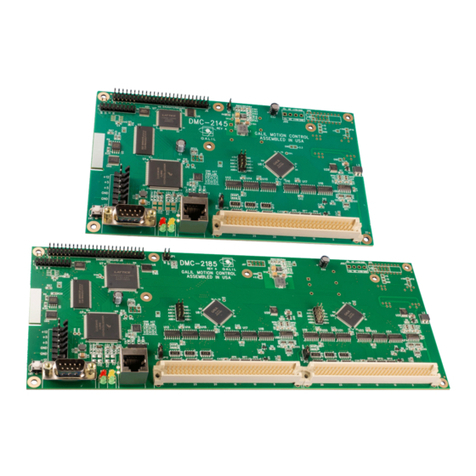
CDS-3310 Chapter 1 Overviewyiii
Command Summary – Position Tracking Mode ....................................................... 49
Electronic Gearing ...................................................................................................................50
Ramped Gearing ......................................................................................................................50
Example – Electronic Gearing Over a Specified Interval.......................................... 51
Command Summary - Electronic Gearing ................................................................52
Electronic Cam ........................................................................................................................ 53
Contour Mode............................................................................................................................4
Specifying Contour Segments .....................................................................................4
Additional Commands.................................................................................................5
Command Summary - Contour Mode ......................................................................... 6
General Velocity Profiles ............................................................................................ 6
Example.......................................................................................................................6
Virtual Axis ...............................................................................................................................9
Dual Loop (Auxiliary Encoder).................................................................................................9
Additional Commands for the Auxiliary Encoder.......................................................9
Backlash Compensation ............................................................................................10
Example.....................................................................................................................10
Motion Smoothing...................................................................................................................11
Using the IT Command: ............................................................................................11
Example.....................................................................................................................12
Homing ....................................................................................................................................13
Example.....................................................................................................................13
Command Summary - Homing Operation................................................................. 15
Operand Summary - Homing Operation....................................................................15
High Speed Position Capture (The Latch Function)................................................................15
Example.....................................................................................................................15
Chapter 7 Application Programming 16
Overview .................................................................................................................................16
Using the DOS Editor to Enter Programs ................................................................................16
Edit Mode Commands...............................................................................................17
Example.....................................................................................................................17
Program Format.......................................................................................................................18
Using Labels in Programs .........................................................................................18
Special Labels............................................................................................................18
Commenting Programs.............................................................................................. 19
Executing Programs - Multitasking .........................................................................................19
Debugging Programs ...............................................................................................................20
Trace Command ........................................................................................................20
Error Code Command................................................................................................21
Stop Code Command.................................................................................................21
RAM Memory Interrogation Commands ..................................................................21
Operands....................................................................................................................21
Example..................................................................................................................... 22
Program Flow Commands .......................................................................................................22
Event Triggers & Trippoints......................................................................................22
Conditional Jumps.....................................................................................................26
IF, ELSE, AND ENDIF.............................................................................................28
Subroutines................................................................................................................ 29
Stack Manipulation....................................................................................................30
Auto-Start Routine ....................................................................................................30
Automatic Subroutines for Monitoring Conditions................................................... 30
Mathematical and Functional Expressions ..............................................................................35
Mathematical Operators ............................................................................................35
Bit-Wise Operators.................................................................................................... 35




























